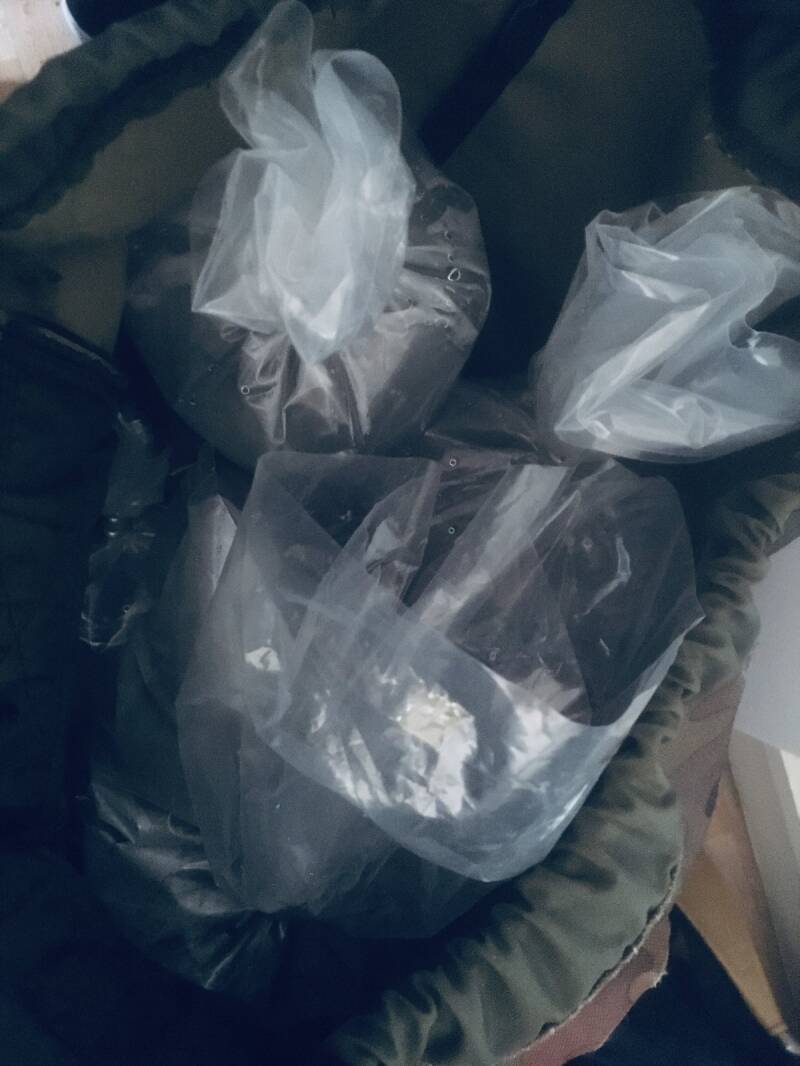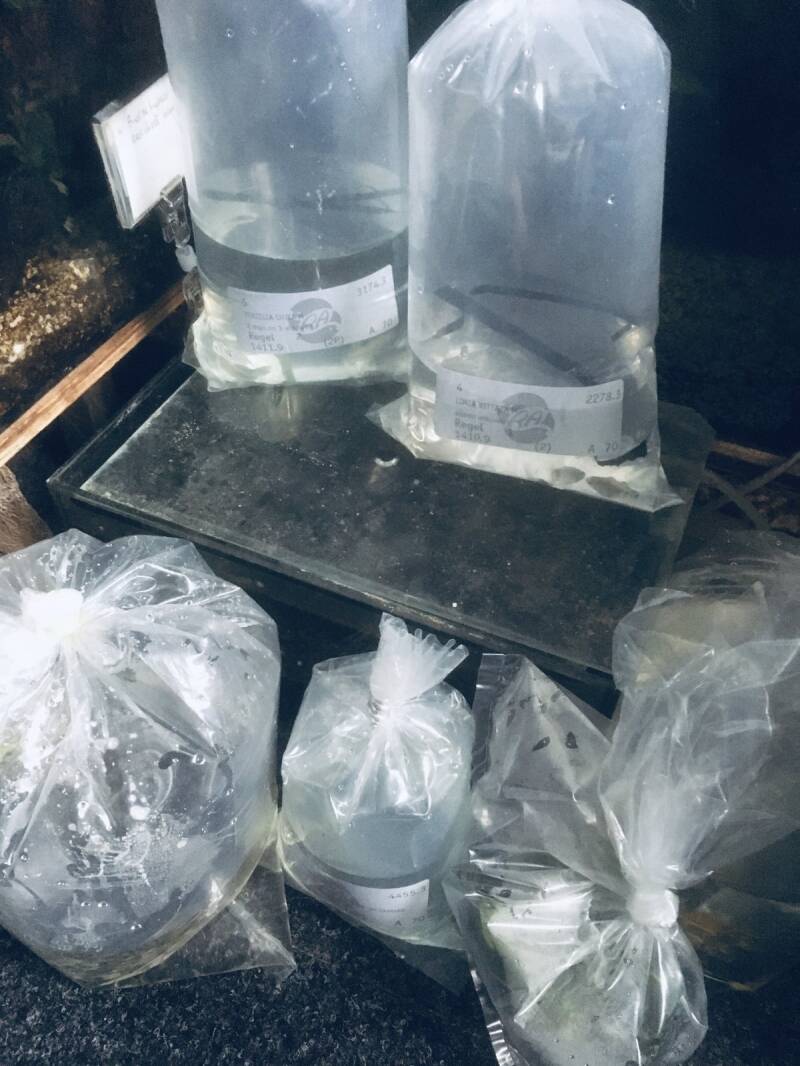Routine
Maintaining one or more tanks needs time and effort. But to most aquarists it's just a routine.
Every aquarist deals with water changes, scrubbing the algae from the glass pane, filter cleaning, feeding the fish and check the water parameters. I won't say how to do it for it depends on multiple factors how high the frequency should be. And to most aquarists those parameters within this routine is known by themselves. You just can not compare every tank with content with eachother.
But maintenance means in general also purchasing supplies to get the job done...
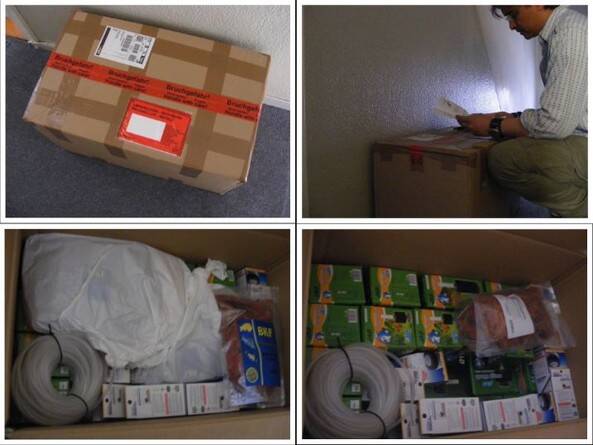
Water changes
A closed environment is not to be compared to an open water in free nature. It needs maintenance. In free nature, nature takes care of all the fluctuations in the water parameters to let those fish live as stable as possible.In a closed environment like a fishtank. To stabilize the water parameters, the tank needs the help of us personally. One of the main things in maintenance is a water change. Toxic elements like ammonia and so can create a threat to fish (and other aquatic life forms) lives. These toxic elements can be a result of too much food left, fish's waste (feces and ammonia from the gills), dead plants, dead fish and so on. A filter and plants can do a lot to keep the toxic levels down but if they can't, such a tank needs a water change to lower the toxic levels as much as possible.
It's always a debate on how much water and how often one should change. Well, to give a proper answer: There is not a steady amount for all tanks. Simply because it depends on the bioload in the tank, the amount of water in a tank (so, automatically the size of the tank, the number of fish, the kind of fish (for not all fish create the same bioload), the decay of plants, food, dead fish or dead crustaceans. In general, smaller fish swim faster than bigger fish in normal situations. Fast swimmers produce more ammonia through the gills than slower swimmers.
Considering the things I've mentioned before, the frequency of a water change will also differ per individual tank. It's nonsense to claim that every single tank needs the same frequency and amount of water to change. It really differs per tank.
But be also aware that there are fish kept in captivity that prefer to live in dirted water. In such a case, the frequency and the amount of a water change will be low. If one would tell you otherwise, you can be sure you'll have your fish for a short period of time. So, this means that not always will a frequent and a bigger water change be beneficial for certain fish. Keep that in mind...!
Nowadays, there are superb automatical water change systems. But such systems are not cheap. Not even if you'll manufacture it yourself. I myself am pretty old school. Which means that I'm still using hoses to do my water changes.

Me as being a keeper and breeder has to deal with another routine. And that's culling or selecting young fish on sex and traits. In almost every generation some culling or selecting is in place if you breed in a serious way. How pure of breeding a specific species or strain might be, there's always a percentage (low, average or high) that won't meet up the traits or characteristics of their strain/species sufficiently. To ensure a good quality of a line, culling or selecting is in place in my opinion.
The word "culling" sounds a bit harsh but culling is just a way of selecting and nothing else. But a lot of people associate culling with killing those fish. But that doesn't have to be the deal. To me culling means separating the ones that won't meet up my criteria. Those that will be culled, end up in a mutt tank where they may crossbreed. That doesn't mean that culled fish are ugly or sick fish. Not at all, they can even be the beauty you've ever searched for but they just won't be used for further linebreeding with the lines I'm keeping.
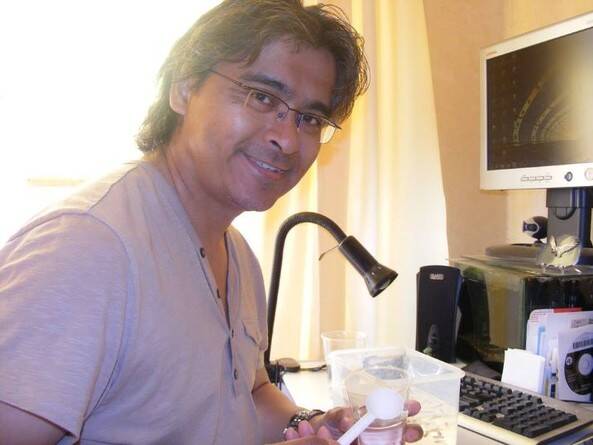
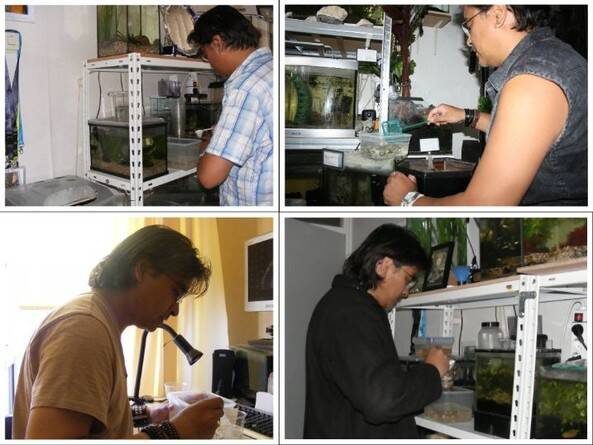
No matter if you're just selecting or really culling, all fish will be put in smaller containers to make the selecting easier. It does take time but I don't mind.
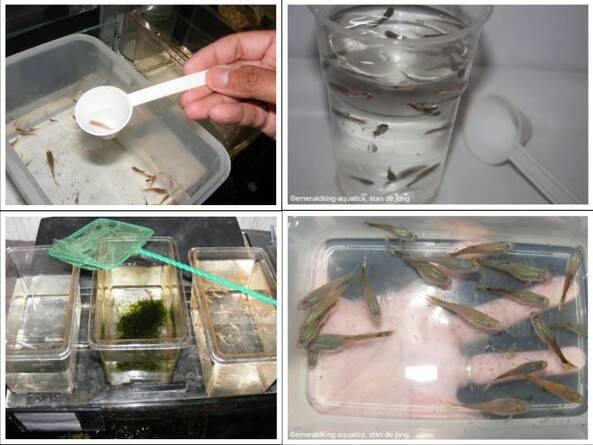
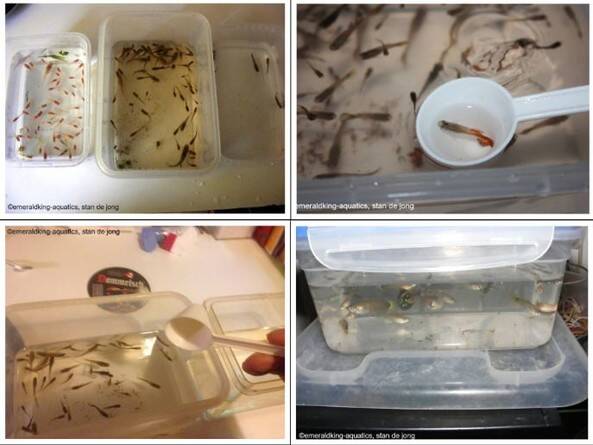
But sometimes I also make it more easier and taking my time with a bucket full of fish, a little scoop and a fishnet on a small stool. Really relaxed...

On a frequent base I do check out my fish if everything is okay. I can do that by checking them out in a smaller container, using a sugar spoon or by using my hand to the glass. In some way, those fish let me do that without any problems.


This is a very good way of checking your fish. But be sure that you've got clean hands without a soap film on your hands.
From time to time I also have to scoop newborns or very young fry out of the breeding tanks in order to move them to a grow out tank. So, that they will grow up in a good pace.

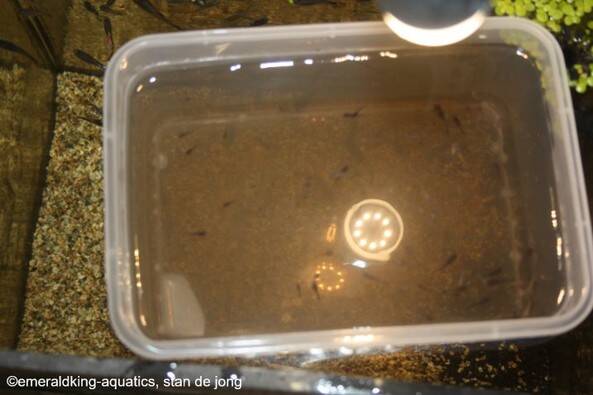
Unfortunately, fish also die at some point. If I do know that it was because of old age or it's been attacked or got stuck between things, I'll get them out of the tank and will flush them. But if a healthy looking fish dies in a sudden and none of the above reasons apply, I will have a closer look in order to find out of what might have been the cause of death. So, I'll know wether to treat the tank they've died in.
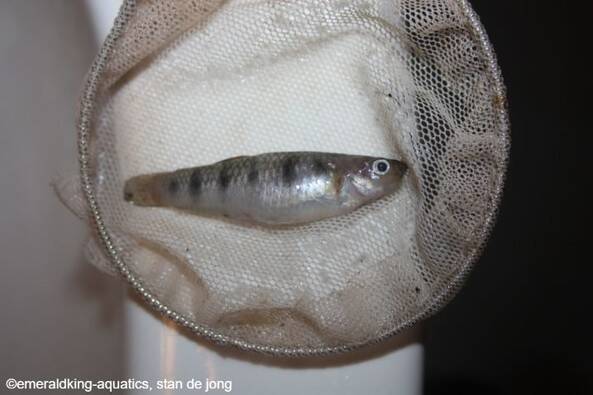
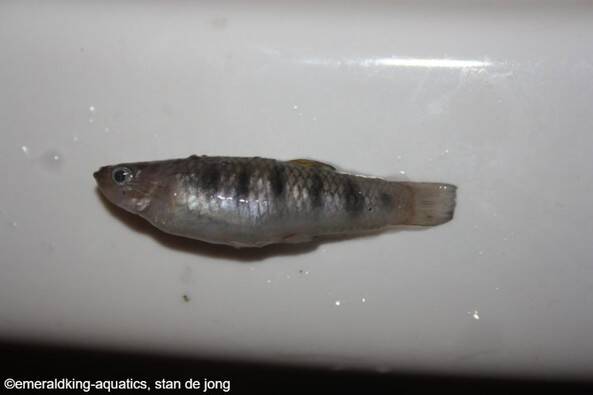
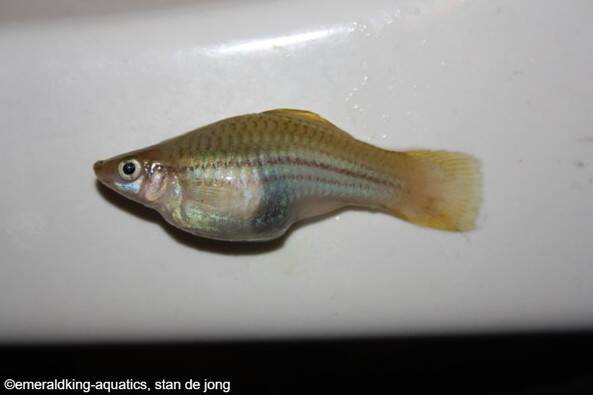
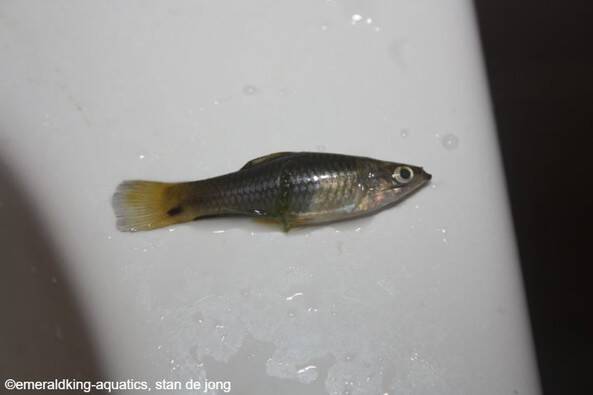
Always get dead fish out if you don't trust it.
Note: How healthy and well balanced a fishtank may be, fish can still die without a clear reason. So, it has to be clear that this doesn't only happen in a fishtank with bad conditions.
Fish food
Feeding my fish happens once or twice a day overhere. Not all livebearers (or even other kinds than just livebearers) need the same diet. I won't tell what food needs each specific species needs. But I can tell you that I do give all my fish a various diet.
Below: I do prefer to use bulk packaging of fish food. Very practical when having multiple tanks.
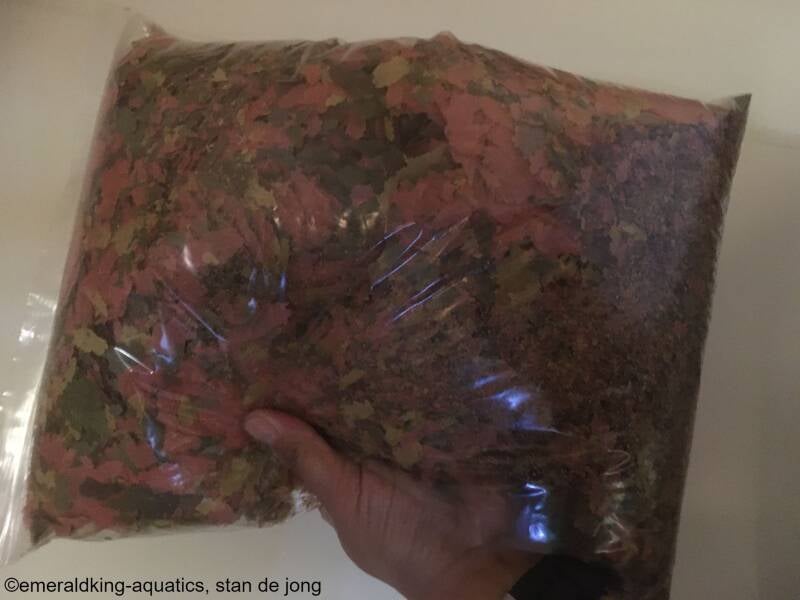
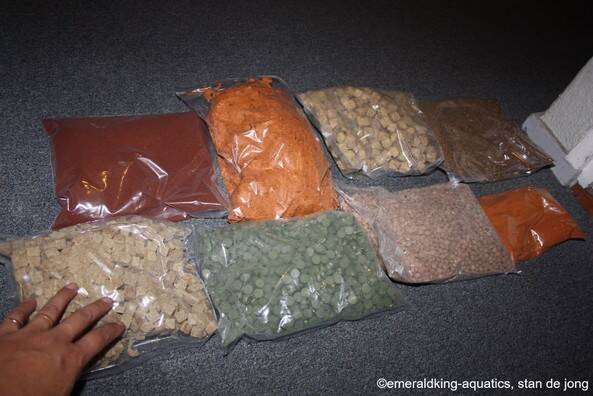

Above: Overhere a nice combo of different kinds of nutritious fish food.


Above: A coffee bean grinder is also very practical for grinding coarse feed (photo right).
Below: Dried shrimps is a must for certain fish. All my carnivorous livebearers love them.


Below: My stash of fish food.

Besides dried and frozen food, I also give them live food. For all carnivores and omnivores an important nutrient.
Above: White mosquito larvae.
Below: Blood worms.
You can also find live food outdoors, of course. Just be sure that no negative bacteria are in there that might cause problems with your fish. Many insects lay their eggs in the water. Try a pond, ditch or something similar. For sure it's a cheaper way of getting your hands on live food.


Above: A whole bunch of mosquito larvae in one of my outdoor tubs.
Checking the water temperature
Checking the water temperature can be done with simply a thermometer. There are several kinds of thermometers. In my case with multiple tanks, a individual thermometer for each tank can be a pricey thing. So, I myself prefer an infra red thermometer which one can use by just pointing to the glass of the tank. This way, you just need one thermometer. And you don't have the risk that bad bacteria or other microscopic influences can be stuck to the thermometer what may contaminate other tanks in comparison to a regular thermometer that is used for multiple tanks.
Below: An infra red thermometer.
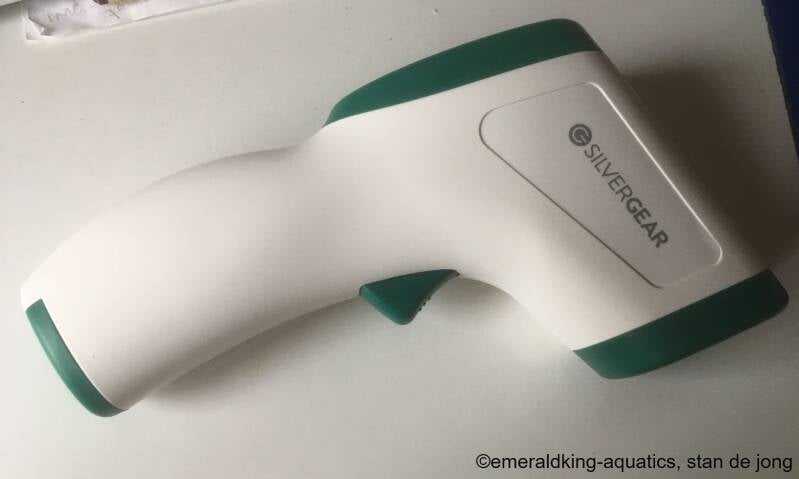

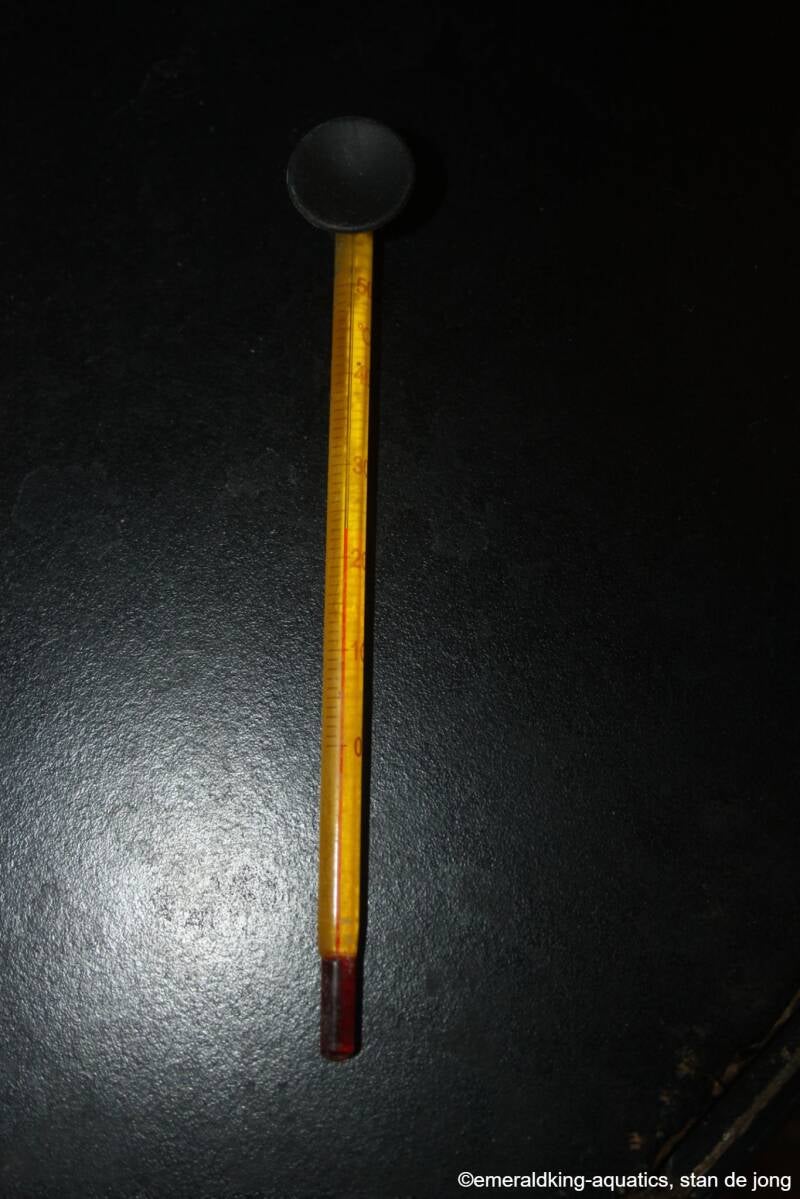
Above: An adhesive thermometer (left) and a regular thermometer (right).
Shipping fish
Shipping fish is not without a risk. There are many ways to ship fish correctly. Most important is that the wellbeing of those fish during the shipment should be number one at all times.
Note: Don't feed your fish a couple of days before bagging them for shipment. The water stays cleaner that way which is in favor to those fish during shipment.
Most of the time, people pack those fish in a bag filled with water and extra oxygen. This is a good way to do. But do realize that the water will shake during shipment. I myself think that more stress can occur when the water shakes all the time. This goes as well when packed in bottles, jars or other cases. I myself prefer using breathing bags (also known as breathers bags). Most known brand is Kordon LLC. But nowadays, more brands are available. When you use breathing bags, the bag can be completely filled with water. No extra oxygen in the bag is needed. These bags breath. They let oxygen (from the environment) in and let CO2 out with any leaking. Because you can fill the whole bag with water, no water shaklng is present, Which avoids more stress during shipment. I wouldn't recommend it but one could throw such a filled bag without any chance that those fish will notice any movement in the water. It also means that the parcel can be kept smaller than when regular bags with oxygen are used.

What should be mentioned is that breathing bags are more expensive than regular fish bags. I assume that that is the main reason why many people won't use them. But if I take a look at the duration of shipment, fish kept in breathing bags can survive much longer than when shipped in regular bags with oxygen. Fellow breeders had even fish arriving after three weeks of shipment and those fish were still fine and had even fry in there that were born in such breathing bags. And depending on the outdoor temperature, if it gets to low, I do use styrofoam boxes. And if needed one or more heatpacks.
Otherwise, I'll use other material that will have an insulation function and offers protection to external damage during shipment.
These styrofoam boxes come in different sizes and the box itself is waterproof. It won't leak unless someone is making a hole in it. That's why it also happens that water is poured in directly in the box without any bags to move bigger fish like koi for instance
Photo right: A pile of styrofoam boxes..

Another way of packing fish for shipping is in regular fish bags. But if I look at the regulations in my own country, we need to bag those fish twice. So, two bags in case the inner bag may leak for some reason. And it also insulates a bit. In these bags should be ⅓ water and ⅔ air according to the regulations. Just like the double bagged fish in the pics below:
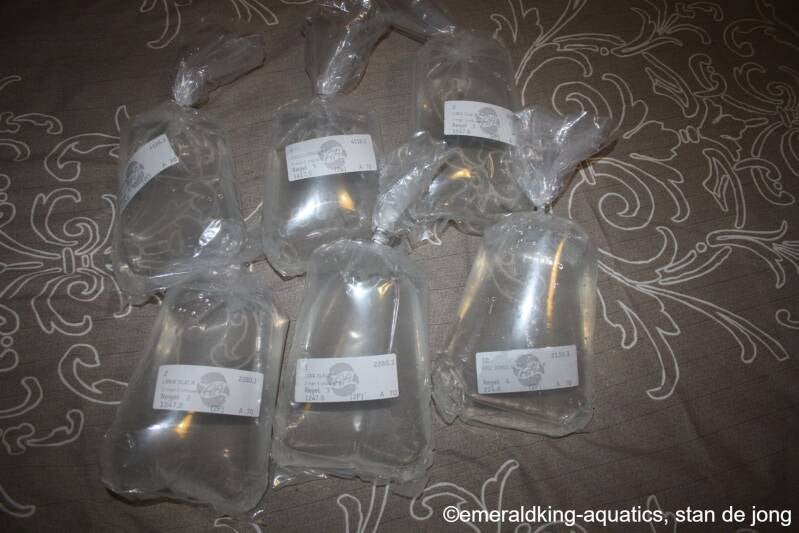
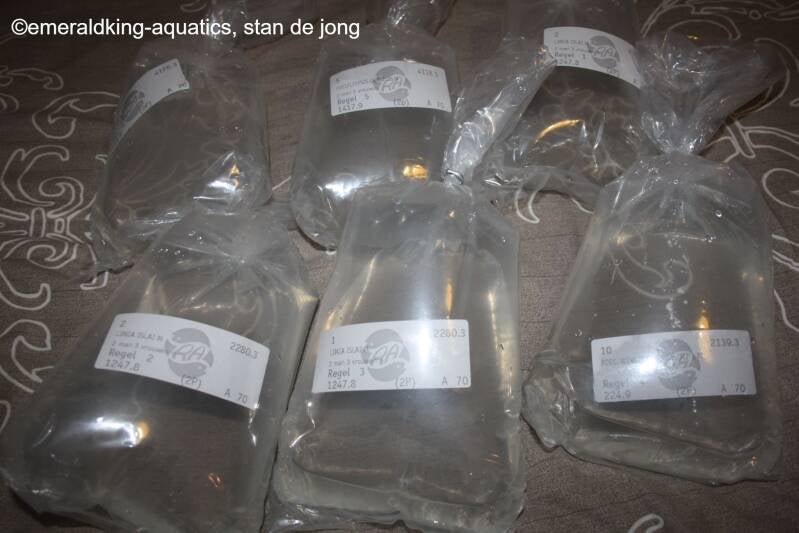
If I have to pick up fish at somebody's place or I should bring fish to someone, I'll put them in regular fish bags or in these small containers. The lids have a silicon sealing which avoids leaking. And I'll put them in an insulation bag to avoid too much temperature fluctuations.

If you'll decide to bag those fish in regular bags, it's better to put them in a laying position than in a standing position. In that way, those fish can swim better and the oxygen surface is larger than in a standing position. For a longer period of shipment, a laying position is way better. But most people will put them in a standing position to safe space.
The normal ratio
water : oxygen in a fish bag is
⅓ : ⅔




And the best fish bags to use are those with a round sealed bottom, like the one shown in this picture below.
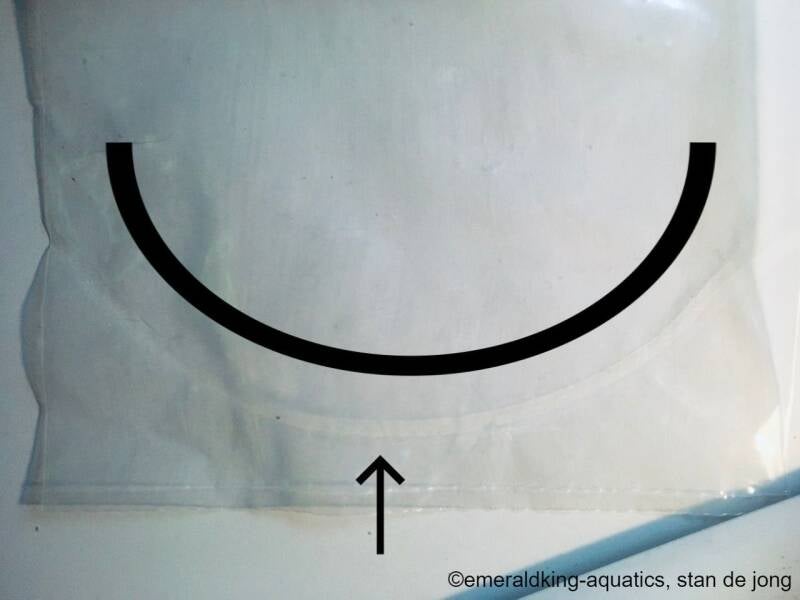
This way no fish will get stuck in a corner. And it lowers down the risk of fish damage.
New fish additions
When you have new fish assests to enter the tanks, I prefer to acclimate the new fish to the present temperature first before entering a tank by putting a bag, jar, bottle or small container in a tank. After they've acclimate sufficiently, I check the water parameters in the packing. And I'll add some water of the tank in the packing during half an hour. Never will I put new specimens of the same species in the same tank as the already present fish for a couple of days. I have extra small tanks to put those new fish in where they'll stay in for about 5 days to quarantine them. This makes it possible for me to check those new fish for diseases or other contagious conditions. And I'll check them for wounds, fungus and blisters. Because there is nothing as bad as cross-contamination.

Above & below: New purchased fish.
